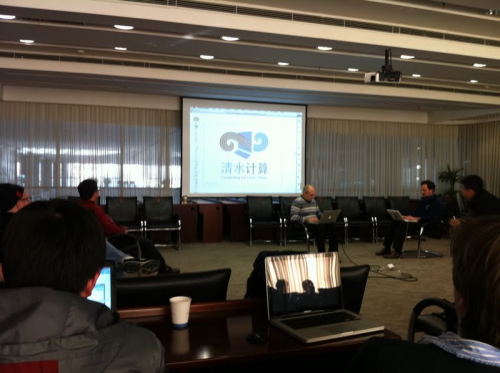 BEIJING — In the conference hall of Institute of Computing Technology, nearly 150 scientists and students initialized a three-day drumbeat hackfest. Drumbeat is a global community of innovators, hackfests are live collaborative events where several new projects and initiatives will be started, new networks of developers and scientists will be formed, and the most promising prototypes will go forward to development.
BEIJING — In the conference hall of Institute of Computing Technology, nearly 150 scientists and students initialized a three-day drumbeat hackfest. Drumbeat is a global community of innovators, hackfests are live collaborative events where several new projects and initiatives will be started, new networks of developers and scientists will be formed, and the most promising prototypes will go forward to development.The event has two parts – an evening overview lecture series on 23rd March 7pm-9pm, and a two-day hackfest, 24th and 25th March. Some of the world's leading developers in this field participated the event, like David Anderson , director of the famous SETI@home volunteer computing project (from University of California at Berkeley), and Carl Christensen, CTO of the Quake Catcher Network Project for volunteer earthquake detection (from Stanford University). Dr. Gang Chen, a scientist from Institute of High Energy Physics, Chinese Academy of Sciences, also presented their work on protein structure prediction running on CAS@home.
During the hackfest, groups of about 4-5 developers work with 2-3 scientists on prototyping challenges that will help to promote citizen cyberscience in China. One interesting challenge is “clean-water”, i.e., to develop web interface and promotion campaign to get 10,000 people to join an online Chinese team to help Tsinghua University researchers solve the problem of providing cheap, clean drinking water, using nanotechnology. Dr. Dongbo Bu and Dr. David Aanensen, led a group to turn mobile devices into a sensor to help catalogue regional plants and animals, build earthquake sensor networks, or measure the interaction pattern for epidemiological modelling of TB and H1N1. Carl Christensen successfully compiled BOINC on Longsoon, the MIPS-based Chinese processor developed by Institute of Computing Technology of CAS. Hopefully, CAS@home will appear on Longsoon laptops as one of the pre-installations---this surely leads to a “deep green” Longsoon.
The developers' programming arts, together with well-designed challenges, guarantees significant progresses in the two-day hackfest. “Obviously we will see several promising projects in two or three weeks”, said Francois with high confidence.

downloadFile